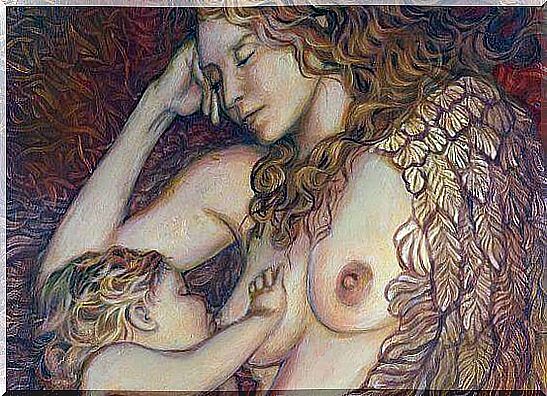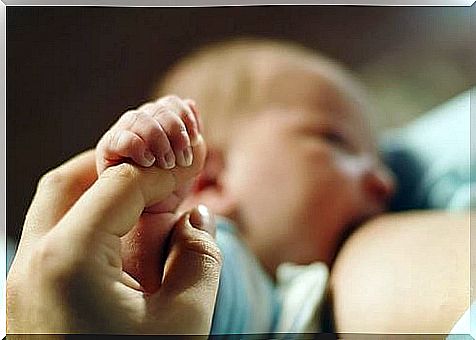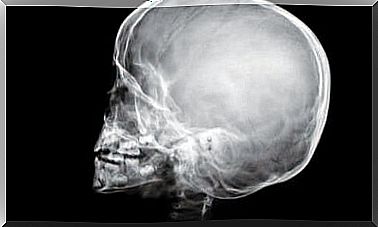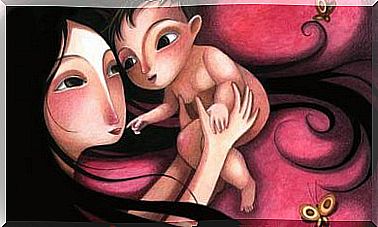Tetanalgesia, When Our Grandmothers Were Right

Our grandmothers were right, few things can alleviate a crying baby like breastfeeding. Tetanalgesia is that calming effect that children experience when being breastfed, feeling safe and relaxed as well as being protected by feeling the contact of their mother.
The term is certainly not new. Among the most classic images about parenting that we all have in mind, is that of those women with their children clinging to their breasts for simple pleasure and not for feeding purposes. After a hit, a tantrum or a visit to the doctor, it was common for these little ones to find calm when they were breastfed.
Now, the word itself was coined by two pediatricians: M. Merino Moína and J. Bravo Acuña from the “El Greco” Health Center in Getafe (Madrid), who published their work in the medical journal “FAPap”. Tetanalgesia is capable of relieving pain in the infant, and hence, many pediatricians and doctors make use of this “technique” when giving vaccines or performing certain tests with babies.
An interesting topic that today we want to share with you in our space.
Tetanalgesia, when breastfeeding relieves the infant’s pain
All the moms who have breastfed their children will have noticed. Sometimes, the baby is not hungry, however, when they wake up crying at night with colic or when nothing seems to calm their crying, nothing is as therapeutic and effective as breastfeeding.
Tetanalgesia allows babies to suck, that instinctive reflex that guarantees their survival is a true physiological choreography that in turn reduces stress on the child’s brain. A baby sucks not only to satisfy his hunger, but to feel good, to relax.

The nutritive and non-nutritive suction
The subject is certainly interesting. Babies do two types of sucking: nutritive and non-nutritive. Nutritious suction is what they use to eat. It is rhythmic, deep and rhythmic and lasts a few minutes.
- Now, in turn, it is common for them to also practice the non-nutritive, which is something more superficial, relaxing and serves them in turn to strengthen and improve their own nutritional suction. Although there are not many studies on this type of sucking, it should be said that we should not see it as something negative or as a “vice” (referring to children’s pleasure with pacifiers).
- Keep in mind that a pacifier can never replace a mother’s breast. It is precisely when practicing non-nutritive sucking that the baby calms down when he feels the smell of his mother, when he feels her warmth and is wrapped in that pleasant feeling of security and satisfaction.
A pacifier will never promote this type of sensation. They are two completely different things.
Tetanalgesia for painful medical procedures
Many doctors and pediatricians are trying to implement the technique of tetanalgesia in health centers to reduce the pain suffered by babies when subjected to certain invasive procedures such as, for example, the heel test.
It is even suggested that if the mother decides to extend breastfeeding for several more years, she also use tetanalgesia for those times when children must receive their vaccines, to alleviate their fears, reduce stress or moments of anxiety.

The real problems of tetanalgesia
Tetanalgesia does not have any side effect, on the contrary, it is an activity that women have put into practice since time immemorial, since a mother knows very well when her child needs food and when comfort, when she seeks to feel protected or feel her closeness in those nights when nightmares or fear cloud your rest.
- The mother who follows her instinct is the wisest, however, there are several problems that currently prevent babies from benefiting from something as wonderful as tetanalgesia.
- Children who extend their breastfeeding for years if the mother so wishes, are seen as dependent, as if somehow, we were slowing down their emotional maturity by not ending this bond earlier.
- Breastfeeding is not yet publicly frowned upon. Few moms dare or can breastfeed in public spaces without being admonished, or without receiving uncomfortable looks from people who mistake the natural for something erotic or in bad taste.
- If it is already offensive for many to see a mother breastfeeding her baby, it is even more offensive to see a woman with her two or three year old children glued “to the breast”.
No woman should be judged or criticized for it. There should be no double standards regarding breastfeeding and offenses should not be heard against a woman if she decides to extend it until her children are older. Today there is very little culture about breastfeeding, when in reality, it is something that should only concern two people, the mother and her child.

Do not hesitate to pay attention to what the grandmothers told us. If a baby cries, breastfeed, if a child is nervous, has colic or something hurts, breastfeed. Practice tetanalgesia until you want it or your child asks you to.









